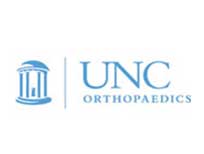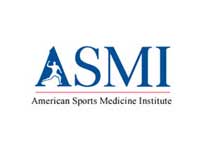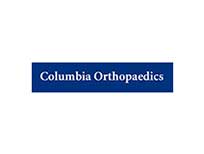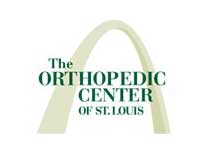- What is the meniscus?
- How does a torn meniscus happen?
- What does a torn meniscus feel like?
- How is torn meniscus diagnosed?
- Is there other damage to the knee when the meniscus is torn?
- What are torn meniscus treatment options?
- What is torn meniscus surgery?
- What is the difference between partial meniscectomy and meniscal repair?
- Do you need your meniscus?
- What are possible meniscus surgery complications?
- What kind of anesthesia is used?
- What do I need to do to prepare for torn meniscus surgery?
- How long will I be in the hospital?
- What happens on the day of meniscus surgery?
- How should I care for my knee after surgery?
- What will torn meniscus recovery involve?
- When can I return to sports or full duty at work?
What is the meniscus?
The meniscus is a wedge-shaped cartilage ring found on both the inside and outside of the knee between the femur (thigh bone) and tibia (shin bone). The menisci act as shock absorbers in the knee and provide stability to the joint.
How does a torn meniscus happen?
The meniscus is usually injured by twisting on a planted foot or squatting down and forcefully bending the knee. Occasionally, the tear occurs with very little stress on the knee. The tear can also be degenerative, meaning that the tear occurs because the tissue is worn out over time due to arthritis in the knee.
What does a torn meniscus feel like?
Most meniscus tears lead to knee pain in the area of the tear, on the inside or outside of the knee. Swelling of the knee may also occur, as well as pain that can radiate down the leg. Occasionally, locking and catching of the knee occur when the meniscus gets wedged in between the bones of the knee. Pain and instability caused by the meniscus tear can also cause the knee to buckle or “give way.” Twisting activities usually worsen the symptoms.
How is torn meniscus diagnosed?
A set of X-rays may be ordered to evaluate the knee for arthritis or a fracture of the bones. Many times the diagnosis of a meniscus tear can be made through the examination in the office. However, in most cases, an MRI can be helpful to confirm the tear and rule out any other injuries to the knee. Request an appointment today.
Is there other damage to the knee when the meniscus is torn?
Other ligaments in the knee can be injured at the same time as the meniscus, depending on how your knee was injured. In addition, there can be an injury to the joint surface (articular cartilage) at the time of injury. If surgery is required, damage to the joint surface will be evaluated and treated at the time of your arthroscopy.
What are torn meniscus treatment options?
Some people with meniscus tears will respond to conservative treatment, including rest, medications, and physical therapy. Meniscus tears do not heal, and over a period of time your knee joint will grind out the tear. In some cases, a cortisone injection can also be helpful to resolve the pain and swelling. Whether or not you are a good candidate for conservative treatment will depend on the type of tear, age of the tear, and your desired activity level. Most people that have a torn meniscus go on to have knee arthroscopic surgery to help to resolve their symptoms.
What is torn meniscus surgery?
The arthroscope is a fiber-optic instrument (narrower than a pen) that is put into the knee joint through small incisions. A camera is attached to the arthroscope, and the image is viewed on a TV monitor. The arthroscope allows the surgeon to fully evaluate the entire knee joint, including the kneecap (patella), the cartilage surfaces, the meniscus, the ligaments (ACL & PCL), and the joint lining. Small instruments ranging from 3-5 millimeters in size are inserted through the incisions to enable the surgeon to feel the joint structures for any damage, diagnose the injury, and then repair, reconstruct, or remove the damaged tissue.
Before the development of arthroscopy, large incisions had to be made over the knee joint to remove the entire meniscus. Today’s arthroscopic techniques allow more complete evaluations of the knee joint while allowing the surgeon to only remove the damaged portion of the meniscus, or to repair the meniscus if possible.
What is the difference between partial meniscectomy and meniscal repair?
Depending on the type of tear, the piece of meniscus that is torn may be removed from the knee (partial meniscectomy) or repaired (meniscus repair). Whether or not a tear is repaired depends on the likelihood of the tear healing. If a tear occurs in the outer one-third of the meniscus (peripheral tear), there is usually adequate blood supply for the tear to heal if fixed. However, tears in the inner two-thirds (where most tears occur) have no blood supply, and will not heal with repair. Therefore, the torn piece needs to be removed. Every effort is made to try and repair a tear that may heal. The overall recovery time is increased when a tear is repaired in order to protect the repair.
Do you need your meniscus?
It is always best to have your own normal meniscus. For this reason, every attempt is made to repair a meniscus tear that may heal. However, for tears that are torn beyond repair, it is best to remove the torn piece. The piece that is torn does not function like a normal meniscus, so removing that piece does not decrease the amount of functioning meniscus. Leaving a torn piece may irritate the knee joint and cause the tear to get larger. Only the portion of the meniscus that is torn or diseased is removed.
What are possible meniscus surgery complications?
While complications are not common, all surgery has associated risks. Possible complications include stiffness of the knee after surgery or continued pain. The use of arthroscopic techniques attempts to limit these complications. Other complications include infection, bleeding, nerve damage, blood clots, or problems with the anesthesia. If a meniscus repair is performed, it is possible that the torn area will not heal. This would require a second surgery to remove the torn meniscus. Even though this is possible, it is better to attempt to repair a meniscus that may heal, in order to preserve the normal meniscus function.
What kind of anesthesia is used?
Torn meniscus arthroscopy can be performed with general anesthesia (going to sleep) or regional anesthesia (spinal or epidural block). It is your choice. The anesthesiologist will discuss your options the morning of surgery.
What do I need to do to prepare for torn meniscus surgery?
Our staff will help to set up the surgery through your insurance company and will instruct you on any paperwork that may be necessary. If you are over the age of 50 or have significant health conditions, you may need an EKG and chest X-ray. You may also need to see your internist or family doctor to obtain a Letter of Medical Clearance. The day before the surgery, a member of the hospital or surgery center staff will contact you about what time to arrive for surgery. Do not eat or drink anything after midnight before your surgery.
How long will I be in the hospital?
Torn meniscus surgery is an outpatient procedure and most patients go home the same day.
What happens on the day of meniscus surgery?
When you arrive at the surgery center, you will be admitted and taken to a preoperative holding area where you are prepared for surgery. You will be asked several times which extremity the surgeon will operate on. Please note that you are asked this question many times on purpose. Anesthesia will be administered and the surgery is then performed.
After the operation, you will be taken to the recovery room to be monitored. Once the effects of the anesthesia have worn off and your pain is under good control, you will be given your postoperative instructions, prescription for pain medication, and released.
Please be aware that the process of checking in, preparing for surgery, undergoing the operation, and recovering from anesthesia takes the majority of the day. It is recommended that your driver bring some reading material for the duration.
How should I care for my knee after surgery?
Prior to your discharge, you will be given specific instructions on how to care for your knee. In general, you can expect the following:
Medication:
You will be given a prescription for pain medication.
Showering:
You may shower, but you should keep the dressing dry. After your dressing is removed, you may get your knee wet. You cannot take a bath until the wounds are completely sealed, which is usually 2-3 weeks after surgery.
Crutches:
You will be instructed how to use crutches before the surgery. You should bring a set of crutches with you to the surgery. The longevity of crutches will depend on the type of surgery performed. Crutches are commonly required for a couple of days, unless you had a meniscus repair. In this case, the surgeon will let you know how long you should stay on your crutches to protect the repair.
Brace:
If a meniscus repair is performed, you will receive a brace to restrict the motion of your knee. This is to protect the repair for the first 4-6 weeks and allow the area to heal.
Diet:
Resume your regular diet as soon as tolerated. It is best to start with clear liquids before advancing to solid food.
Ice:
You should apply ice over the dressing for 20-30 minutes every hour for several days. Do not use heat for the first 48-72 hours.
Suture removal:
The stitches are absorbable so they do not need to be removed.
Exercise:
You will be instructed on exercises you can begin immediately after the surgery. You will begin physical therapy 2-3 days post-op.
Return to work or school:
You can return to school or work anywhere from 2 days to 2 weeks. If your job involves extended walking or heavy activity, you may be out of work or school for a longer period of time.
What will torn meniscus recovery involve?
The rehabilitation is based on several goals:
- Allowing the tissue to heal
- Regaining motion
- Regaining strength
- Returning to sports or work activity
After partial meniscectomy, rehabilitation generally occurs very rapidly. Most patients can return to strenuous work in 4-6 weeks. However, complete recovery may take 2-3 months to get all your strength back. Following meniscus repair, you will be restricted from performing certain activities. The specific rehabilitation protocol will be reviewed with you after surgery.
When can I return to sports or full duty at work?
Your return to your desired activity level will depend on the extent of damage and the procedure performed on your knee. In general, you will be allowed to return to sports in 4-8 weeks after surgery. You must have good motion, strength, and control of your knee. How quickly you return depends on several factors, including:
- Your own rate of healing
- The damage found at surgery
- If you have any complications
- How well you follow the postoperative instructions
- How hard you work in rehabilitation
Torn Meniscus Treatment St. Louis
Mark Miller, MD is committed to you — the patient. It is understandable to be anxious about your injury and the need for torn meniscus surgery. As one of the leading knee specialists and orthopedic surgeons in the St. Louis area, Dr. Mark Miller has expertly managed torn meniscus treatment for countless patients. You can trust us to answer all questions and provide you with the highest-quality care.
Schedule an appointment to begin managing your torn meniscus symptoms with a personalized treatment plan!
Accreditations & Associations






